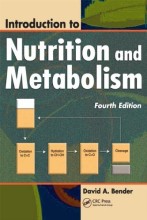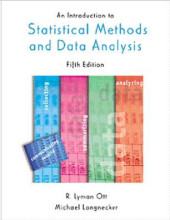NP7 Carbohydrate metabolism II
14 important questions on NP7 Carbohydrate metabolism II
Which of the following compounds are involved in the complete oxidation of pyruvate?
- Acetyl CoA
- Phospho knol pyruvate (PEP)
- Citric acid
- Glyceraldehyde-3-p
What is the ATP yield for full oxidation for
- Acetyl-CoA
- Pyruvic acid / Pyruvat
- PEP
- GA3P
- Glucose
- Acetyl-CoA
- 10
- Pyruvic acid / Pyruvat
- 12.5
- PEP
- 13.5
- GA3P
- 16
- Glucose
- 30
How goes the reversal of the reaction of pyruvate kinase? To use PEP for gluconeogenesis
- the processes pyruvate carboxylase and phosphoenolpyruvate carboxykinase (PEPCK) are needed
- Higher grades + faster learning
- Never study anything twice
- 100% sure, 100% understanding
Oxidation of citrate (C6)
- How many C-atoms are released as CO2?
- How many of these are released inside the citric acid cycle?
- How many Acetyl-CoA is formed?
- Citric acid is related to glucose (both C6). Nevertheless, it only yields 21.5 instead of 30 ATP, Why?
- 6
- 4 (5 mito)
- 1
- glucose oxidation is very efficient. Citrate has losses (OAA -> PEP)
What is the difference in ATP yield between oxaloacetate (OAA) and citrate upon complete oxidation? Explain your answer
Propionic acid oxidation is
3 ATP's are needed for this reaction
Then Succinylcholine-CoA will go into the TCA cycle
What is the ATP yield of propionic acid ![]()
Do not forget the propionic acid --> Succinyl-CoA which will cost 3 ATP
What happens with the glucose homeostasis in bloodplasma in the fed and fasted state
Fasted state: release from liver, NOT muscle, into circulation!
Glycogen --> glucose 1-P --> glucose 6-P --> Glucose
G-6-P obtained in fed versus fasted state (glycogenolysis)
- glycogen phosphorylase to make glucose 1-phosphate
- glucose 1-phospate <-> glucose 6-phosphate
in the fed state
- glucose ---hexokinase---> glucose 6-phosphate
What is (in)direct glycolysis?
- Elongation of glycogen within a cell costs 1 ATP since it needs "activated glucose" (=UDP-glucose)
- Release of glucose-1P from glycogen doesn't require ATP since it is mediated by Pi
- Indirect glycolysis is slightly more expensive (=1 ATP / glucose)
- glucose --(-1ATP)--> G-6-P --(-1 UTP)--> glycogen --> G-6P
The energy costs for storage and mobilisation of blood glucose via hepatic glycogen (glucose --> glycogen ---> glucose) is:
- 0 ATP
- 1 ATP
- 2 ATP
- 3 ATP
Regulation glycolysis (PFK: phosphofructokinase) characteristics
- ATP and Acetyl-CoA
- Phosphofructokinase
- inhibition by ATP, stimulation by AMP
- inhibition by citric acid (in cytosol for FFA synthesis) stimulation by low O2 (OXPHOS is blocked)
- Pasteur effect (switch slow to fast glucose use)
What is the problem and the solution for glycolysis in (an)aerobic conditions?
Problem:
- No regeneration of NADH by mitochondrial oxidative phosphorylation
Solution:
- Regeneration of NADH to NAD+ by cytoplasmic
conversion of pyruvate to lactate (NO ATP!)
- pyruvate + NADH --> Lactate + NAD+
Aerobic: glucose + 6 O2 --> 30 ATP + 6 CO2 + 6 H2O
Anaerobic: glucose --> 2 ATP + 2 lactate
What is the energetic efficiency of Aerobic and anaerobic glucose ?synthesis?
- aerobic (glucose --> CO2)
- anaerobic (glucose --> lactate)
- GEglucose : 2816 kJ/mol
- GElactate: 1364 kJ/mol
- ATP: 33 kJ/mol
Aerobic: (30*33)/2816 = 35%
Anaerobic: 2 lactate: 2*1364 = 2728 kJ
delta E = 2816 - 2728 = 88 kJ is lost
trapped 2 ATP = 2*33 = 66 kJ
--> E.E. = 66/88 = 75%
heat = 88-66 = 22 kJ
The question on the page originate from the summary of the following study material:
- A unique study and practice tool
- Never study anything twice again
- Get the grades you hope for
- 100% sure, 100% understanding
































